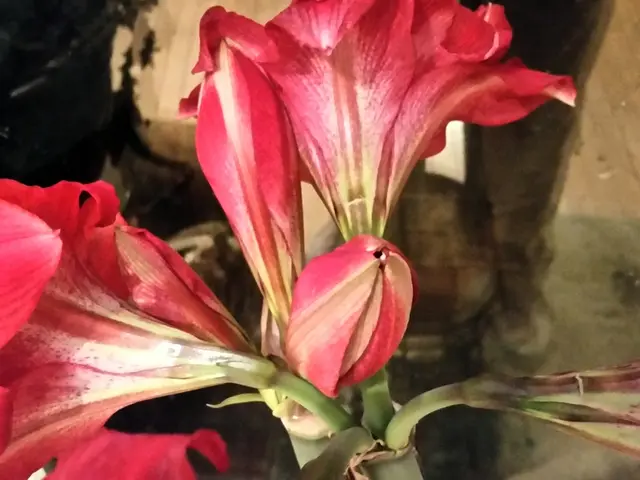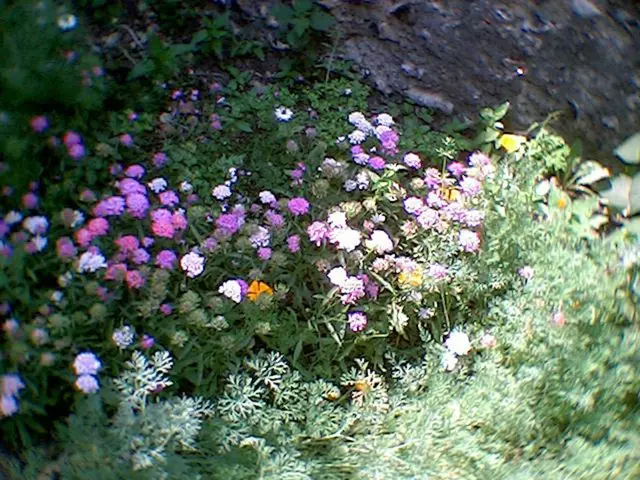Summer Blooming Duration of Peonies: Specialist Perspectives
Revised Article (Title: How Long Do Peonies Bloom In The Summer for Optimal Growth?)
- Author
- Recent Posts
Gardening GuruStep up your gardening game with our expert tips and insights from the green-thumbed genius, Gardening Guru! Browse through the latest bunch of gardening blogs for all the knowledge you need.
Latest Posts by Gardening Guru* Calibrachoa Care: The Ultimate Guide to Growing Million Bells - June 8, 2025* The Great Hydrangea Debate: How to Bloom Blue Hydrangeas in Any Climate - June 8, 2025* Dahlia Variety Showdown: Tips for Choosing the Best Dahlias for Your Garden - June 8, 2025
Peonies, oh peonies! The sight of these fragrant blooms is enough to make any gardener cheer! With their array of vibrant colors and delightful scents, peonies are a must-have for any gardening enthusiast.
Quick Answer***Typically, peonies bloom for approximately 10-14 days during late spring to early summer.**
For an uninterrupted season of peony-admiring, consider planting various types to create a continuous blooming period. Try varieties like 'Festiva Maxima' and 'Duchesse de Nemours'. These spectacular bloomers are perfect for cut flowers and are excellent at gracing your garden with longer blooms throughout the season.
Read moreHow Long Do Marigolds Stay in Bloom: Expert Tips and Wallet-Friendly Flowers** [JUMP TO TOPIC]
- How Long Do Peonies Bloom In The Summer
- Factors Influencing Peony Bloom Duration
- Cold Temperatures and Zone Selection
- Moisture and Soil Drainage
- Tips To Extend Peony Bloom Period
- Balanced Plant Planning
- Consistent and Mindful Watering
- Common Problems Affecting Peony Blooms
- Pests and Diseases
- Improper Care
How Long Do Peonies Bloom In The Summer
It's always a thrill when peonies start to bloom in your garden! So, how long do these beauties dance in the summer sun?
Peonies typically begin their blooming journey around late spring, starting from April, depending on your location. Their show lasts well into early summer, frequently culminating in June's grand finale.
Quick AnswerPeonies usually bloom for 10-14 days.
To make the most of their blooming party, opt for an assorted mix of planting stages: early, mid-season, and late-season varieties. This clever move spreads out the flowering fun, allowing you to enjoy the lovely peony display for a considerably extended period.
Here's a cliff's notes version of peony flowering durations:
| Blooming Stage | Time Frame || --- | --- || Early Bloomers | Late April - Early May || Mid-season Bloomers | Late May - Early June || Late Bloomers | Mid-June - Mid-July |
A garden teeming with peony blooms is a sight to behold. Despite their short blooming life, the flowers have a magic that lingers, making them a cherished addition to any garden.
Read moreHow Long Do Pansies Last: A Guide to Planning Your Winter Garden fürhterleseKeep the peony party going and savor every moment these darlings bring to your greenery haven!
Factors Influencing Peony Bloom Duration
Peonies are special flowers with specific requirements to flourish and bloom for as long as possible. Climate and soil are two essential elements that significantly impact the blooming journey.
Cold Temperatures and Zone Selection
Early Bloomers
Cold-hardy varieties thrive best in zones 3-8, enduring the cool hug of winter. To sprout healthy buds, these varieties require a chilly rest period above 6-week freezing temperatures.
On the other hand, warmer climates (such as in California or Florida) may pose challenges, as peonies need consistent cool to mild temperatures. Choosing cultivars that tolerate mild winter conditions is key to success in such locales.
Sunlight is another essential ingredient for peonies. They need around 6-8 hours of full sun each day. Too much shade might result in fewer blooms or short bloom periods. Avoid planting them in shady spots to give them the light they yearn for.
Remember, peonies are tough, but they need the right conditions to show off their beauty!
Late April - Early May
Moisture and Soil Drainage
Good soil is vital for peony bloom durations. Well-draining soil is imperative because peonies despise wet feet. Sandy soils might require additional soil amendments or organic matter to enhance moisture retention.
Soil pH is also crucial. Peonies prefer slightly acidic to neutral soils (pH: 6.2-7.0). Adding lime can help adjust pH levels if the soil is too acidic.
Nutrients are music to a peony's ears, too. Balanced fertilizers (5-10-5 or 10-10-10) are best to sow seeds in early spring, nourishing the plants for a productive bloom cycle. Over-fertilizingcan lead to plentiful foliage at the cost of fewer blooms.
When planting, mix in a spoonful of organic matter (like compost) into the hole, boosting nutrient content, and drainage. Healthy soil sets the stage for healthier plants, paving the way for longer blooms!
Tips To Extend Peony Bloom Period
Watering: Keep the soil moist but not waterlogged. Watering once a week is sufficient, especially during dry spells. Avoid regions where the water pools, as this can lead to root rot.
Planting Depth: Plant peonies with roots lying 1-2 inches below the soil surface. Too deep, and they might not bloom as expected.
Mid-season Bloomers
Mulching and Compost: Add 2-3 inches of mulch or wood chips around the base of each plant to help retain moisture and protect the soil from temperature fluctuations. Organic matter like compost promotes drainage, improving overall soil health and bolstering bloom periods.
Pruning and Deadheading: Regularly prune spent flowers and deadhead to encourage new blooming cycles, directing the plant's energy towards fresh buds.
Support with Cages: Provide support for the heavy blooms with peony cages to prevent stems from breaking under weight.
Location and Air Circulation: Choose a spot that receives plenty of air circulation to prevent disease and prompt growth. A sunny location provides an excellent backdrop for impressive blooms.
Late May - Early June
Division and Replanting: Divide peonies every 3-4 years, during autumn. This simple act renews the plants and encourages longer, more robust blooms.
Care for Foliage: Ensure healthy foliage by removing any diseased or damaged foliage promptly. Foliage is necessary for storing energy for the next bloom cycle.
Attention to Weather: Protect peonies from harsh weather (strong winds or heavy rains) with temporary covers or windbreaks, safeguarding their blooms.
Proper Planting: Purchase high-quality peony plants from reputable nurseries and plant them deeply (4-6 inches) in well-draining soil to ensure healthy growth right from the get-go.
Putting these tips into practice helps ensure that our peonies continue to shine and bloom long and strong in the summer. ☀️🌷
Common Problems Affecting Peony Blooms
Like other flowers, peonies face challenges that can affect their blooming routine. Key issues include pests, diseases, and improper care. Watch out for these problems to nurture healthier and more robust peony blooms!
Pests And Diseases
Late Bloomers
Beetles and insects such as hoplia beetles are common munchers of peony petals, leaving behind an unsightly trail of holes. Botrytis blight, a fungal disease, causes buds to turn brown and fail to open, releasing a fuzzy gray mold on leaves and stems. Root Rot can occur when peonies' roots are submerged in overly wet soil, leading to roots decaying.
Using fungicides and ensuring proper spacing can help manage these issues. Rust, Powdery mildew, and Black spots can affect foliage, causing them to discolor and drop prematurely. Staying alert for these pesky intruders and taking prompt action can save your peonies from potential damage.
Improper Care
Improper care is a significant factor that affects the blooming of peonies. Overwatering can lead to root rot, while underwatering may stunt growth. Keep the soil moist but not soggy. Don't forget to fertilize; peonies need the right nutrients to thrive and survive. Over-fertilizing can cause lush green growth at the cost of fewer blooms.
Mid-June - Late June
Proper planting practices are essential for peonies' success. Ensure they receive plenty of light while being protected from direct sunlight exposure. Plant them in soil that drains well and is neutral to slightly alkaline (pH: 6.2-7.0). Space your plants sufficiently to promote good air circulation and reduce disease risk. water them thoroughly, use mulch to retain moisture and protect the soil from temperature fluctuations. Tending to your peonies' needs ensures that they remain strong and produce legendary blooms! 😊esaverde🌷
- Gardening enthusiasts can extend the blooming period of their peonies by planting a variety of peonies with different blooming stages, creating a continuous display of these beautiful flowers.
- For optimal bloom duration, consider choosing varieties like 'Festiva Maxima' and 'Duchesse de Nemours', as they are known for their long-lasting blooms throughout the summer season.








